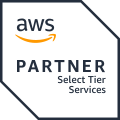Comprehensive Compliance Frameworks
Overcoming Implementation Challenges in Complex Organizations
Achieving compliance and managing risk becomes increasingly complex with every new product, department, business unit, or office. Many complex organizations are turning to a combination of comprehensive compliance frameworks and software solutions that provide a more structured approach to managing risk and ensuring controls are operating effectively, and this move is proving to be financially beneficial.
Read this white paper for comprehensive insights into implementing compliance frameworks for large organizations.


